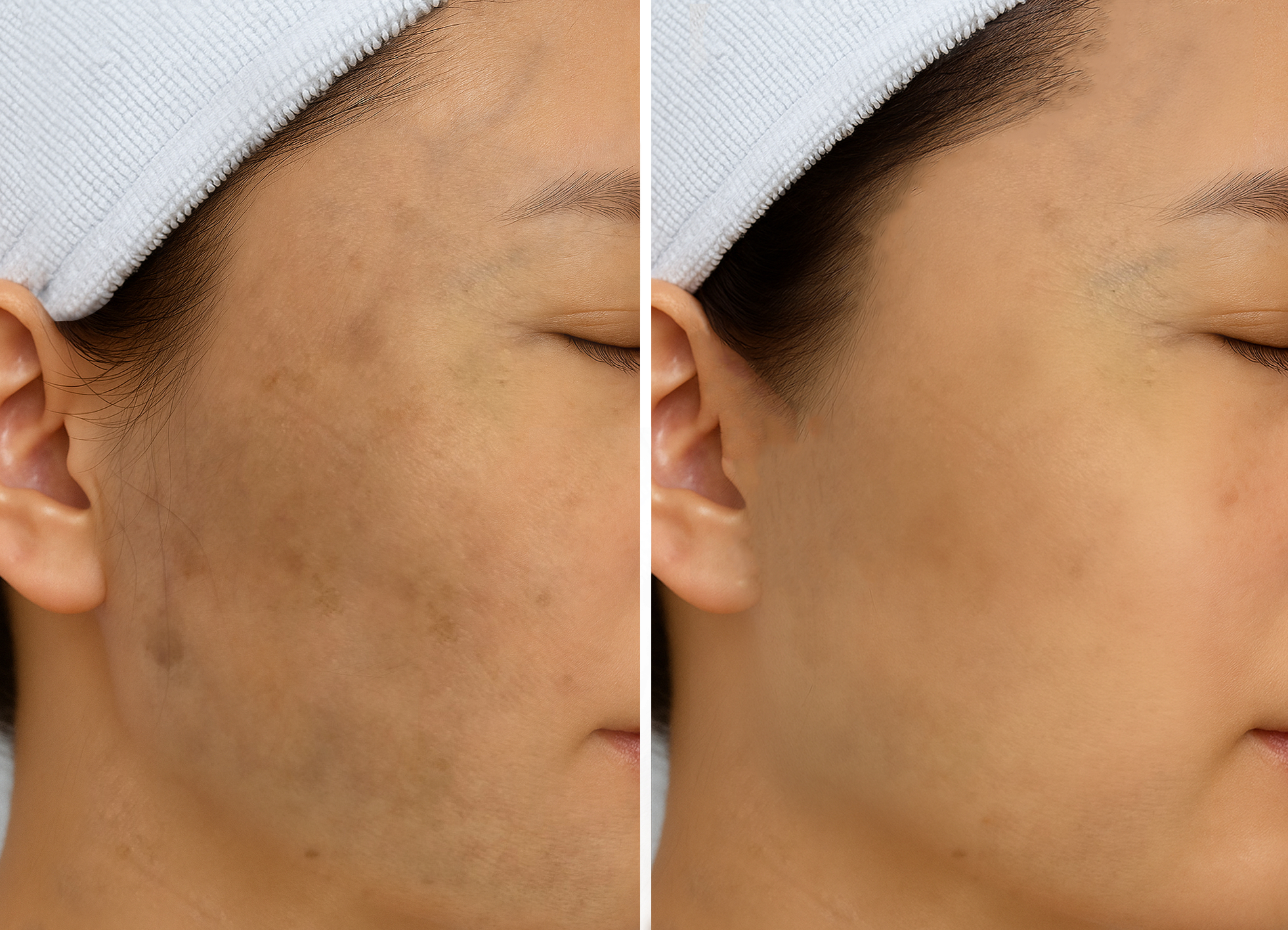My's skin began showing significant signs of darkening and discoloration at age 40, with brown spots and freckles scattered across her cheeks, forehead, and chin. The spots darkened and spread over time, becoming difficult to conceal even with makeup. She tried various cosmetics, oral medications, and supplements, limited sun exposure, and spent tens of millions of Vietnamese dong (several hundred USD) on spa treatments, but nothing worked. The discoloration returned even worse than before.
Doctor Quach Thi Bich Van, a dermatologist and skin care specialist at Tam Anh General Hospital in Ho Chi Minh City, examined My's skin and diagnosed her with melasma and brown spots. The cause was attributed to a combination of genetics, UV exposure from sunlight, hormonal changes, and improper skin care habits.
Doctor Van created a personalized, multi-stage treatment plan for My. The first stage involved topical medications to suppress melanin production and regenerate healthy skin. Once My's skin stabilized, Doctor Van incorporated picosecond laser treatments. This advanced technology uses ultra-short pulses to penetrate the dermis and break down pigment clusters without damaging the skin's surface.
 |
Doctor uses picosecond laser treatment for My's brown spots. Photo: Tam Anh General Hospital |
Doctor uses picosecond laser treatment for My's brown spots. Photo: Tam Anh General Hospital
Doctor Van explained that picosecond laser treatment is suitable for long-standing melasma and dark freckles, effectively fading brown spots without causing peeling or requiring extensive downtime. However, the technology is most effective when combined with a proper skin care regimen, strict sun protection, and consistent adherence to the prescribed treatment.
My received monthly treatments, combined with daily application of prescribed topical medication and broad-spectrum sunscreen. She also adjusted her lifestyle, avoiding late nights, increasing her vitamin intake, and managing stress—all factors that can contribute to melanin production and skin darkening.
 |
My's brown spots and melasma faded after almost a year of treatment. Photo: Tam Anh General Hospital |
My's brown spots and melasma faded after almost a year of treatment. Photo: Tam Anh General Hospital
After about a year of treatment, My's skin showed significant improvement. The discolored areas faded, resulting in a more even and brighter complexion.
Doctor Van emphasized that melasma and freckles cannot be completely eradicated quickly. It's a process that requires patience and a combination of specialized methods, including prescribed topical medications, lasers that selectively target dark pigments, and a consistent skin care and protection routine. Timely and appropriate intervention, under the close supervision of a doctor, can effectively control these conditions and prevent recurrence.
It's important to avoid rushing the process of fading brown spots and freckles by using unverified skin-whitening products or home remedies found online. Many such products contain corticosteroids or harsh exfoliants that can thin the skin, making it more sensitive, prone to irritation, and susceptible to further discoloration, potentially worsening the condition. Inconsistent treatment, premature discontinuation, or frequent product changes can also destabilize the skin, making it less responsive to treatment. It is advisable to seek consultation at reputable medical facilities with dermatology and cosmetic skin care departments to receive appropriate diagnosis and treatment plans from qualified doctors.
Minh Huong
*The patient's name has been changed.
| Readers can submit questions about dermatology and cosmetic skin care here for doctors to answer. |












